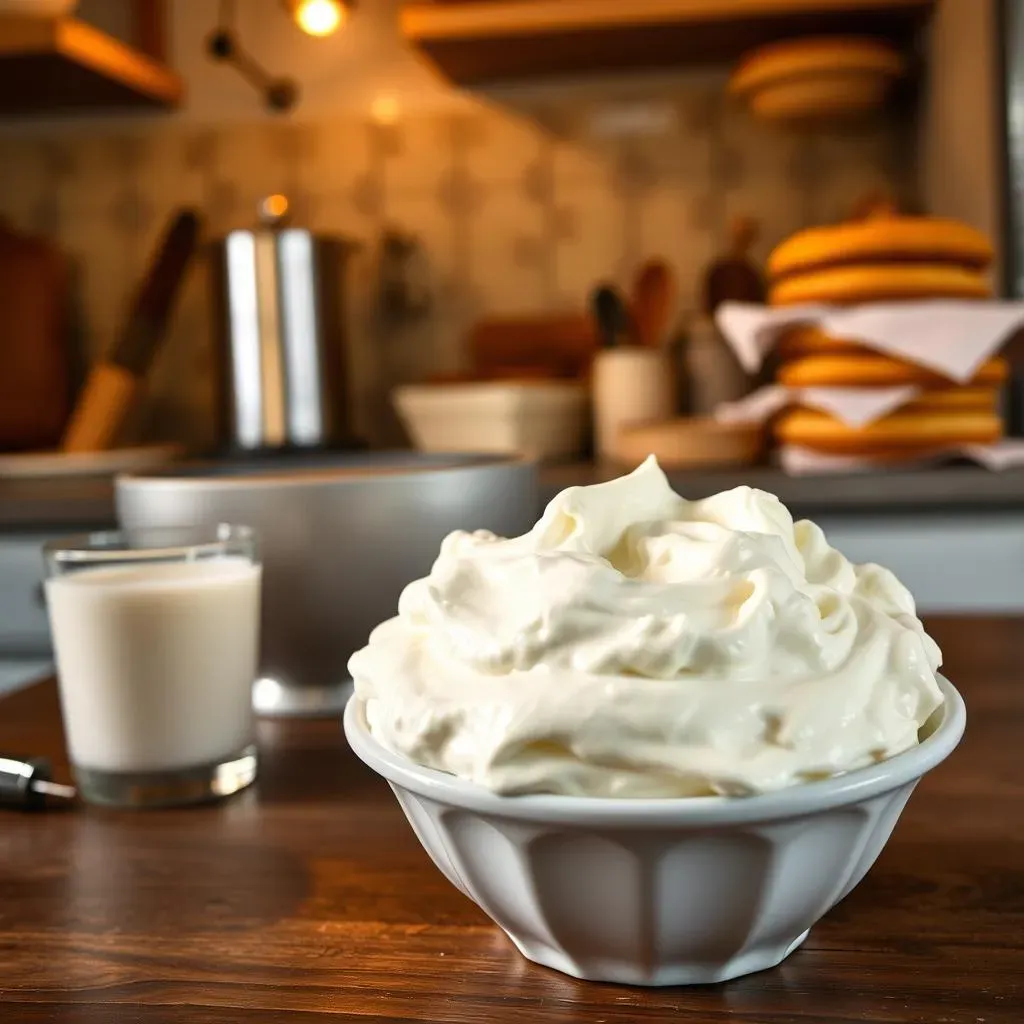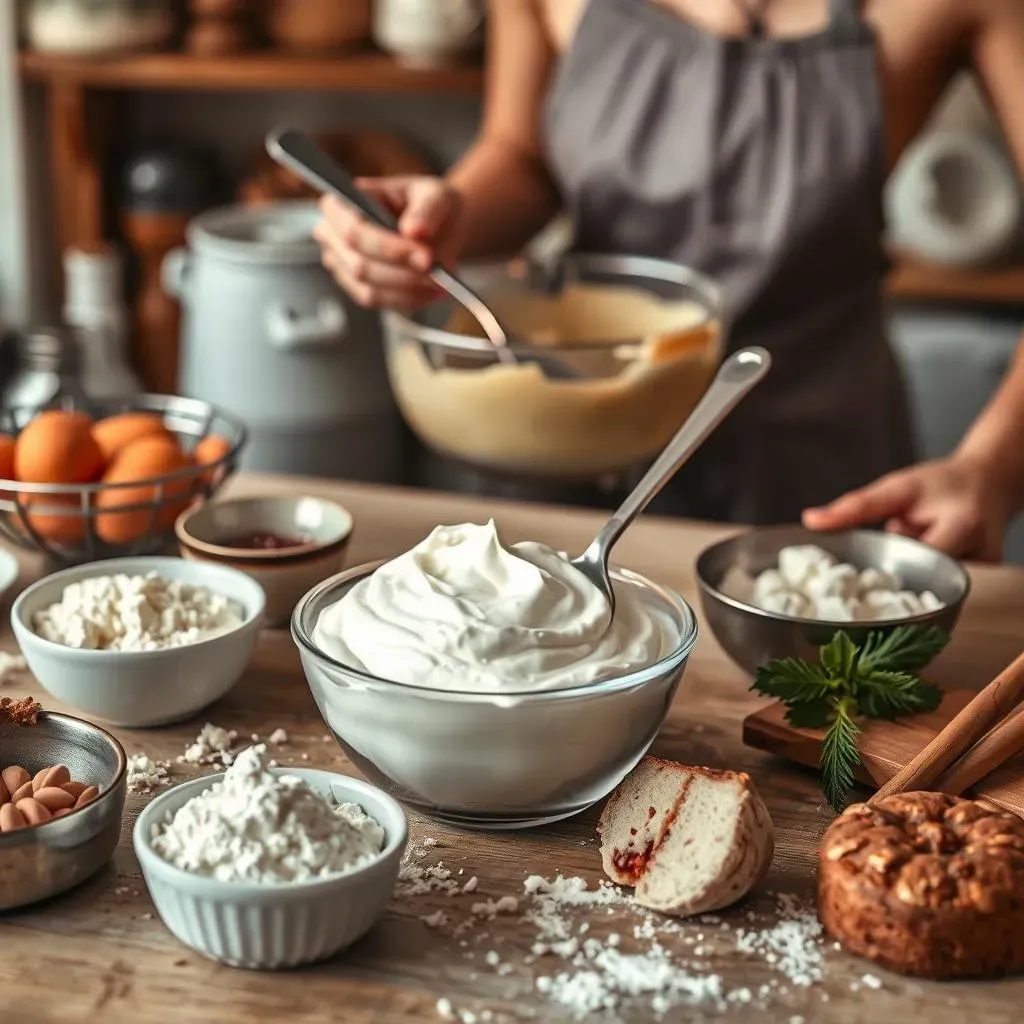Table of Contents
Ever stared into your fridge, recipe in hand, only to discover you're out of milk? It's a classic kitchen conundrum, and I've been there more times than I'd like to admit. But what if I told you that creamy, tangy sour cream could be your secret weapon? Yes, you heard right, substituting sour cream for milk isn't just a last-ditch effort; it can actually elevate your dishes. This guide isn’t just about survival baking, it's about unlocking new possibilities. We'll explore why this swap works, how to nail the ratios, and what to watch out for. Think of this as your culinary cheat sheet to transform a potential baking fail into a delicious win. We'll cover everything from adjusting for the thickness of sour cream to understanding its impact on your final product. So, if you're ready to ditch the milk panic and embrace the tangy goodness, let's get started!
Why Bother Substituting Sour Cream for Milk?

Why Bother Substituting Sour Cream for Milk?
so you're probably thinking, "Why would I even consider swapping sour cream for milk?" I get it. Milk is the go-to liquid in most recipes, but sometimes, life throws you a curveball, like an empty milk carton. Beyond the convenience factor, sour cream brings a different kind of magic to the kitchen. It's not just about replacing liquid; it's about adding richness and a subtle tang that milk simply can't match. Think about it: that extra creaminess can transform a basic cake into something unbelievably moist, and a simple sauce into a velvety masterpiece. Plus, if you're out of milk, using sour cream can save you a trip to the store. It's like having a secret ingredient that's been hiding in your fridge all along. It really is not a bad idea, it can add a twist to a dish you've made a hundred times before.
Here's a quick rundown of why this substitution might be your new favorite kitchen hack:
- Convenience: No milk? No problem. Sour cream is a common fridge staple.
- Richness: It brings an extra layer of creamy texture that milk can't quite achieve.
- Flavor: That subtle tang can add a unique twist, especially in baked goods.
- Moisture: Sour cream's fat content helps keep cakes and muffins incredibly moist.
How to Substitute Sour Cream for Milk in Baking

How to Substitute Sour Cream for Milk in Baking
The Golden Ratio: Sour Cream to Milk
so you're ready to swap out milk for sour cream in your baking, but how do you actually do it? It's not a simple 1:1 trade, unfortunately. Since sour cream is thicker and denser than milk, you'll need to thin it out a bit. I've found that the best approach is to use about 3/4 cup of sour cream for every 1 cup of milk your recipe calls for. But, here's the kicker – you also need to add some liquid to get the right consistency. I usually go with water, but you can also use a bit of the juice from canned fruit to add extra flavor. So, the magic formula is roughly 3/4 cup sour cream + 1/4 cup liquid = 1 cup of milk substitute. It's not an exact science, but it's a good starting point, and I've had pretty great results with it.
Remember, the goal is to get a similar consistency to milk. If your batter or dough seems too thick even after adding the liquid, don't be afraid to add a tablespoon or two more until it looks right. Baking is a little bit like chemistry, but it’s also art, so trust your instincts. Just keep in mind that the fat content in sour cream is higher than in milk, so you might want to reduce the amount of butter or oil in your recipe slightly to balance things out. Don't overthink it, you will be fine!
Ingredient | Amount |
|---|---|
Sour Cream | 3/4 cup |
Water or Juice | 1/4 cup |
Equals | 1 cup of Milk |
Tweaking Your Recipe: Acidity and Sugar
Sour cream has a different level of acidity than milk, and this can affect how your baked goods turn out. Sometimes, the extra acidity can be a good thing, adding a bit of a tangy kick, but other times, it can throw off the balance. If you're worried about it being too tangy, you can add a pinch of baking soda to your recipe. Baking soda helps neutralize the acidity, ensuring that your cake or muffins don't have an overly tart flavor. I usually start with about 1/8 teaspoon for every cup of sour cream, but you can adjust this based on your taste. If you are using a recipe that does not include baking soda, then you may not need to add it.
Also, because sour cream is tangier than milk, you might want to consider adding a little extra sugar to your recipe. It's not always necessary, but it can enhance the sweetness and balance out the flavors. I usually add about 1 to 2 tablespoons for every cup of sour cream, but this really depends on your preference and the recipe itself. It's always a good idea to taste your batter or dough before baking, so you can make any final adjustments to the sweetness level. I know that some people can be hesitant to taste raw batter, but it is a necessary step to make sure it's perfect.
- Baking Soda: Add a pinch to reduce tanginess.
- Sugar: Consider a touch more to balance the flavor.
- Taste Test: Always taste the batter before baking to adjust as needed.
Tips for Successfully Substituting Sour Cream for Milk

Tips for Successfully Substituting Sour Cream for Milk
so you've got the basic substitution down, but let’s talk about some insider tips to really nail this sour cream swap. First off, not all sour cream is created equal. Full-fat sour cream will give you the best results, especially when you're looking for that extra richness and moisture. I’ve tried using low-fat versions, and while they work, they don’t quite deliver the same oomph. Also, always make sure your sour cream is at room temperature before adding it to your batter or dough. This helps it mix in more smoothly and prevents any weird clumps. I can't tell you how many times I've skipped this step and regretted it. It's like trying to mix cold butter into flour, it just doesn't want to cooperate, so save yourself the headache and take the sour cream out of the fridge a bit before you start.
Another thing to keep in mind is the type of recipe you're working with. For things like cakes and muffins, sour cream is a fantastic milk alternative. It adds that lovely moisture and tang that I was talking about, but for recipes where milk is a major component, like a béchamel sauce, you may need to adjust the recipe a little more. In these cases, I usually start with a smaller amount of sour cream and add more liquid to get the right consistency. It’s all about experimentation, really. Don't be afraid to try different ratios and see what works best for you. Baking is a lot like science, but you don't need a lab coat to make something delicious.
Tip | Why it Matters |
|---|---|
Use Full-Fat Sour Cream | Provides the best richness and moisture. |
Room Temperature Sour Cream | Mixes more smoothly, preventing clumps. |
Adjust for Recipe Type | Some recipes may require more liquid. |
The Final Scoop on Substituting Sour Cream for Milk

The Final Scoop on Substituting Sour Cream for Milk
Alright, so we've journeyed through the ins and outs of substituting sour cream for milk, and I hope you're feeling a bit more confident about tackling that recipe with an empty milk carton. It’s really not as scary as it sounds, is it? The key takeaway here is that sour cream isn't just a stand-in; it’s a power-up for your baking and cooking. It brings a richness, a tang, and a moisture level that milk can sometimes lack. Remember that 3/4 cup sour cream plus 1/4 cup liquid rule? That’s your new best friend. And don't forget to taste as you go, a pinch of baking soda, or a touch more sugar can make all the difference. Baking is all about adapting, and now you have another great trick up your sleeve.
I know that sometimes things might not turn out perfect the first time, and that's okay. It’s all part of the learning process. I've had my share of baking mishaps, and each time, I learn something new. So, don't be afraid to experiment, try new things, and most importantly, have fun with it. The kitchen should be a place of creativity and exploration, not a source of stress. Now, go forth and bake something amazing, and if you happen to be out of milk, you know exactly what to do!
Key Takeaway | Why it Matters |
|---|---|
Sour cream is a great substitute | Adds richness, tang, and moisture. |
3/4 cup sour cream + 1/4 cup liquid | Your go-to ratio for milk substitute. |
Don't be afraid to experiment | Baking is all about adaptation. |
The Final Scoop on Substituting Sour Cream for Milk
So, there you have it – a complete guide to substituting sour cream for milk. It's not just a backup plan, it's a versatile technique that can enhance your recipes in unexpected ways. From adding a delightful tang to your baked goods to creating a richer, more luxurious texture, sour cream is a powerhouse ingredient when used as a milk alternative. Remember, it’s about experimenting and adjusting to your taste. If your cake doesn’t rise as high, or your sauce is a bit thicker, don’t fret – that's part of the fun. Now, go forth and conquer your kitchen, armed with your newfound knowledge, and never let a lack of milk stop you again!